27 Wild Animals in Uruguay [Wildlife in Uruguay]
Want to know more about the wildlife in Uruguay?
Discover 27 wild animals in Uruguay in this post, as well as interesting facts about them. 🇺🇾
Learn All About Uruguayan Animals
Ready to learn all about Uruguayan animals?
I’ve always been fascinated by animals, and by how they can be so different from one country to another. In this guide, we’ll focus on the many animals Uruguay has on the land, in the sky, and under water.
I’ve split the guide in 4 categories:
- Native animals from Uruguay
- Endangered animals of Uruguay
- What is the national animal of Uruguay?
- How many animals native to Uruguay?
Let’s dive in right away with our first category!
Native Animals from Uruguay
Uruguay is a South American country located in the southeastern part of the continent, west of the Atlantic Ocean. It is a developing country, has been inhabited by hunter-gatherers for at least 13,000 years, has won its independence from 1811 and 1828, is ranked first in Latin America in peace, press freedom and social progress, and used to be a Spanish colony. It is bordered by Argentina and Brazil, and its capital and largest city is Montevideo, which counts more than 1,319,000 inhabitants (but more than 1,947,000 if you include the metropolitan area).
An interesting part of the country that I wanted to tackle is its wildlife. In light of that, I have listed the best of it, and I hope you will love learning what animals live in Uruguay.
Here’s the Uruguay animals list.
1. Capybara
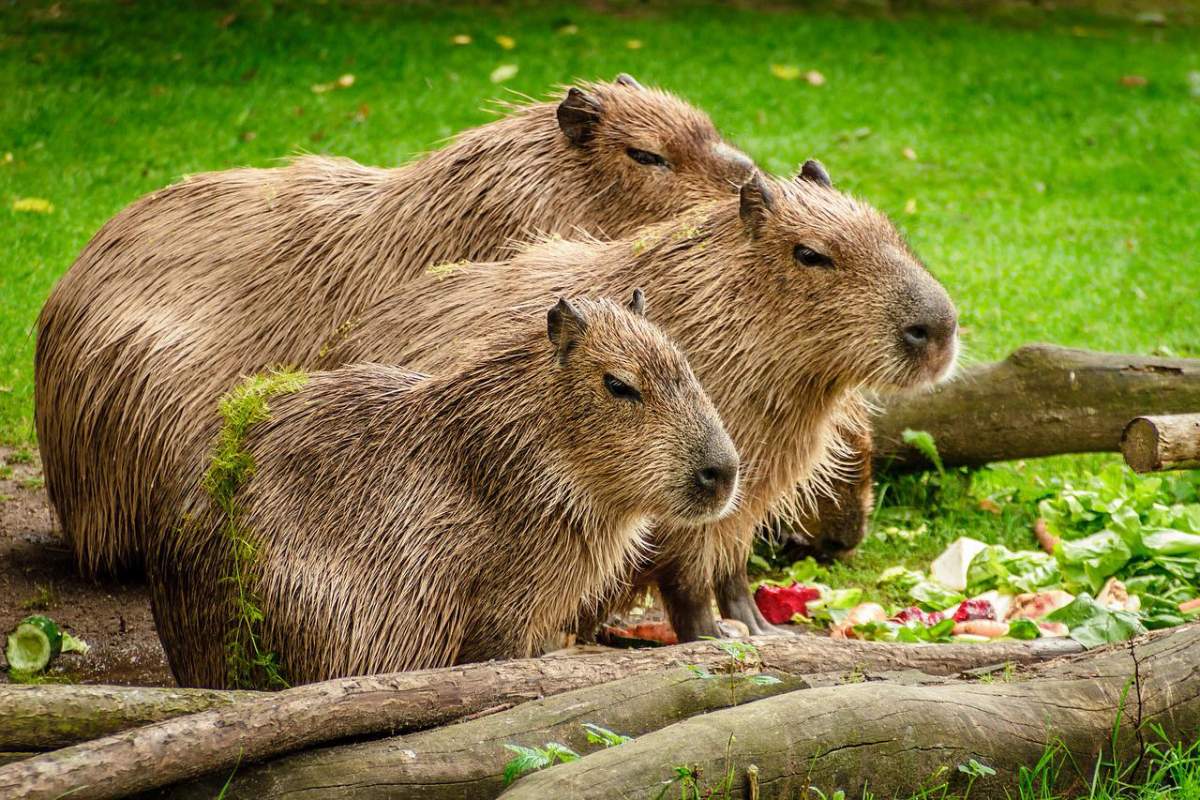
- Name: Capybara
- Scientific name: Hydrochoerus hydrochaeris
- Conservation status:
The capybara, also known as the greater capybara, is a giant species of rodent native to South America. It is the largest rodent in the world, and is closely related to rock cavies and guinea pigs.
This mammal is highly social, and usually gathers in groups of up to 100 individuals, although they are mostly around 10 to 20 members. This animal is featured on Uruguay’s 2-peso coin.
2. South American rattlesnake
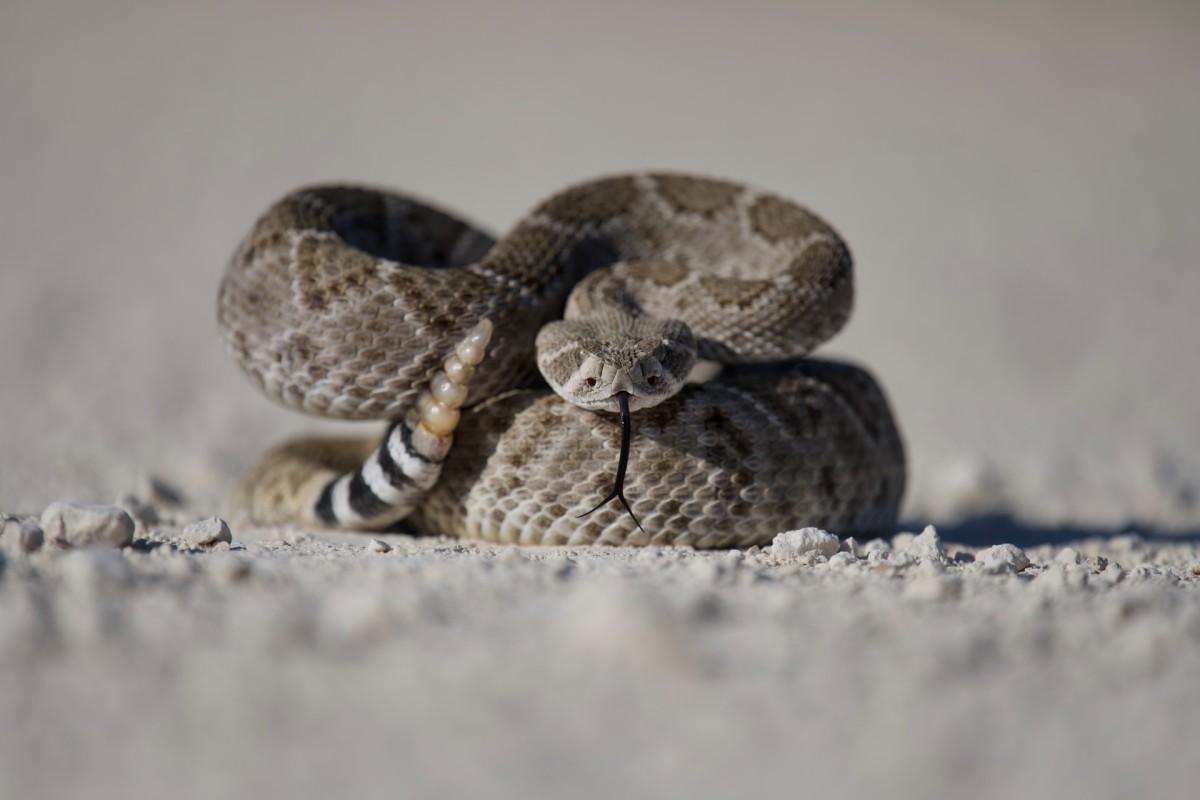
- Name: South American rattlesnake
- Scientific name: Crotalus durissus
- Conservation status:
The South American rattlesnake, also known as the tropical rattlesnake, is a highly venomous species of snake native to South America. Despite this, it is not particularly aggressive, and is only active at dusk and in the early hours of the day, so snakebite incidents are quite infrequent.
This rattlesnake feeds primarily on rodents, but also lizards. It inhabits the savannas and semi-arid areas of Uruguay, and its venom attacks the nervous system, causing paralysis.
3. Black-necked swan
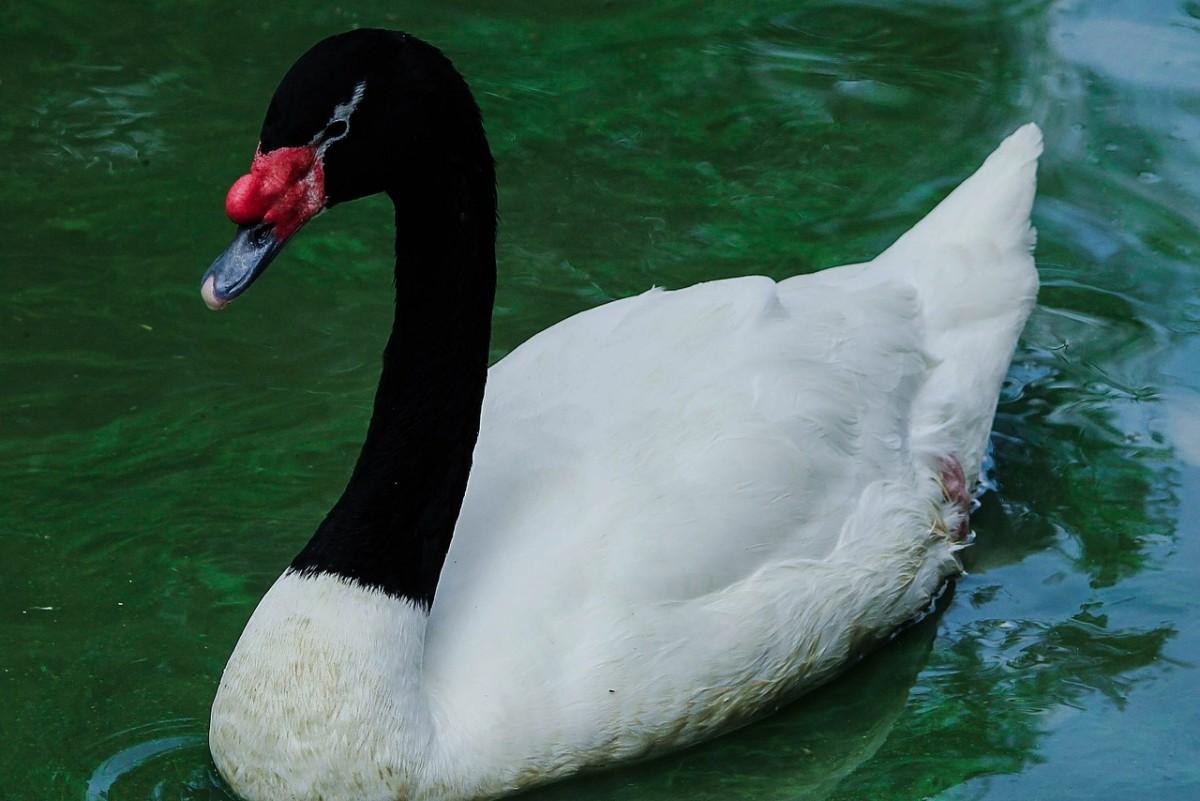
- Name: Black-necked swan
- Scientific name: Cygnus melancoryphus
- Conservation status:
The black-necked swan is the largest species of waterfowl native to South America. As its name suggests, it has an entirely black neck, but also a striking red bill and a white plumage. It is found in the freshwater marshes, lake shores and lagoons of Uruguay, and sometimes migrates, depending on the area.
Although considered of least concern, thousands of black-necked swans died in Chile due to major contamination from a pulp mill.
4. Pampas deer
- Name: Pampas deer
- Scientific name: Ozotoceros bezoarticus
- Conservation status:
The Pampas deer is a species of deer native to the grasslands of South America, and inhabiting low elevations. It is locally known as “gama” or “venado” in Uruguay, and can be found around hills and waters of the country.
This deer can live up to 12 years in the wild, but is threatened by habitat loss and overhunting. Its mating season in Uruguay runs from February to April.
5. Greater rhea
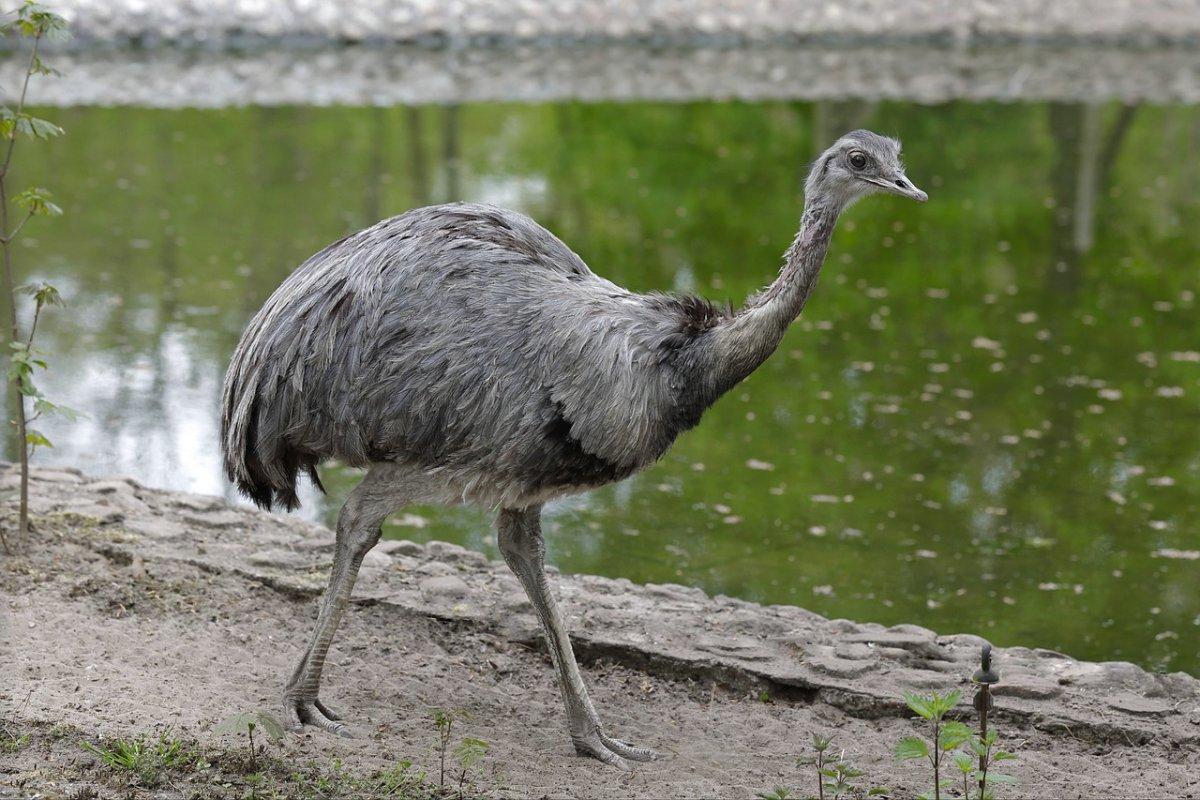
- Name: Greater rhea
- Scientific name: Rhea americana
- Conservation status:
The greater rhea, also known as the American rhea, the gray rhea or the common rhea, is a species of flightless bird native to South America, more precisely from Uruguay, Brazil, Paraguay, Argentina and Bolivia. It inhabits open areas, usually grasslands, grassy wetlands and savannas, and feeds on foliage, seeds and fruits.
The Uruguayan population of the greater rhea is the most affected one by its global, ongoing decline, due to increased hunting and habitat conversion.
6. Argentine horned frog
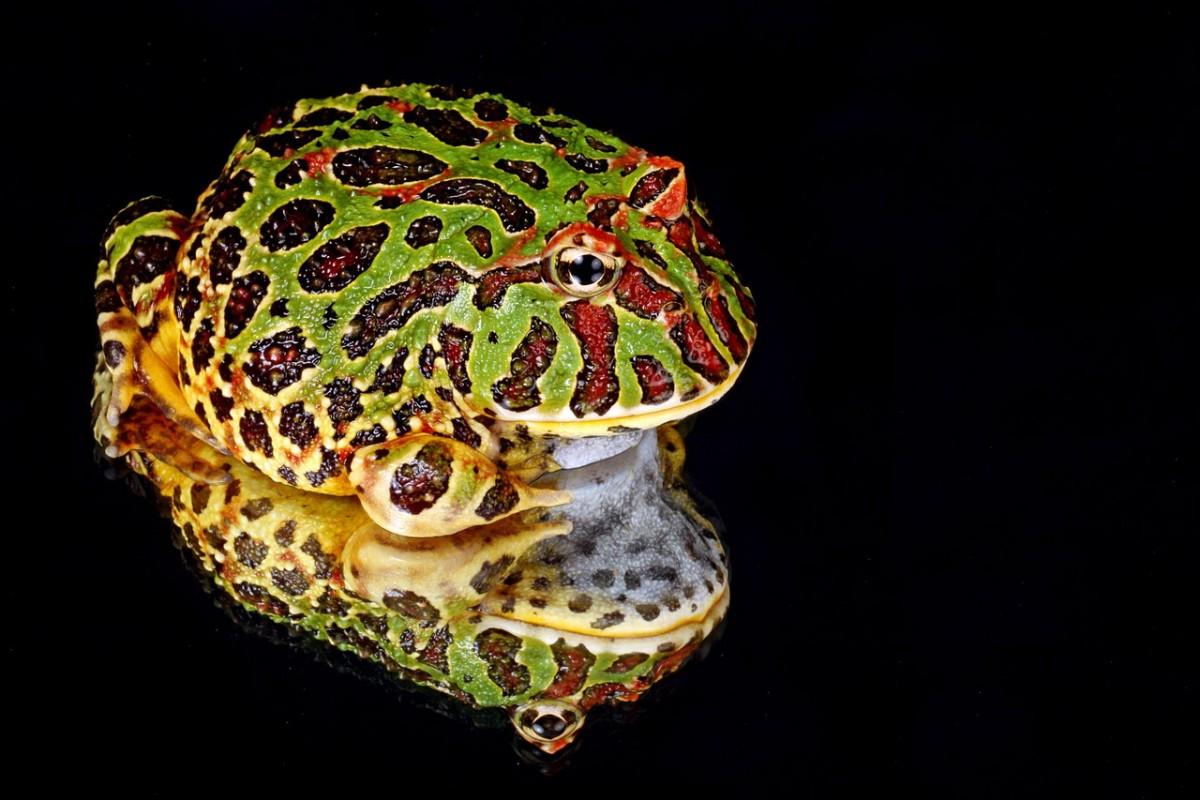
- Name: Argentine horned frog
- Scientific name: Ceratophrys ornata
- Conservation status:
The Argentine horned frog, also known as the ornate horned toad, the ornate pacman frog or the Argentine wide-mouthed frog, is a species of frog endemic to South America. Despite its name, it can also be found in the savannas of central and northwestern Uruguay, where it thrives.
The name “pacman frog” comes from the famous arcade game, because this frog also has a mouth that takes up much of its body, and eats a lot.
7. Crab-eating fox
- Name: Crab-eating fox
- Scientific name: Cerdocyon thous
- Conservation status:
The crab-eating fox, also known as the bushdog, the maikong, the forest fox or the wood fox, is a medium-sized species of canid endemic to central South America. It inhabits the savannas, woodlands, thickets, tropical savannas and subtropical forests of the northern half of Uruguay, where it mostly feeds on crab, but can also eat eggs, insects and rodents, depending on availability.
Depending on the part of its range, the crab-eating fox is more or less threatened with extinction, but is overall considered of least concern.
8. South American fur seal
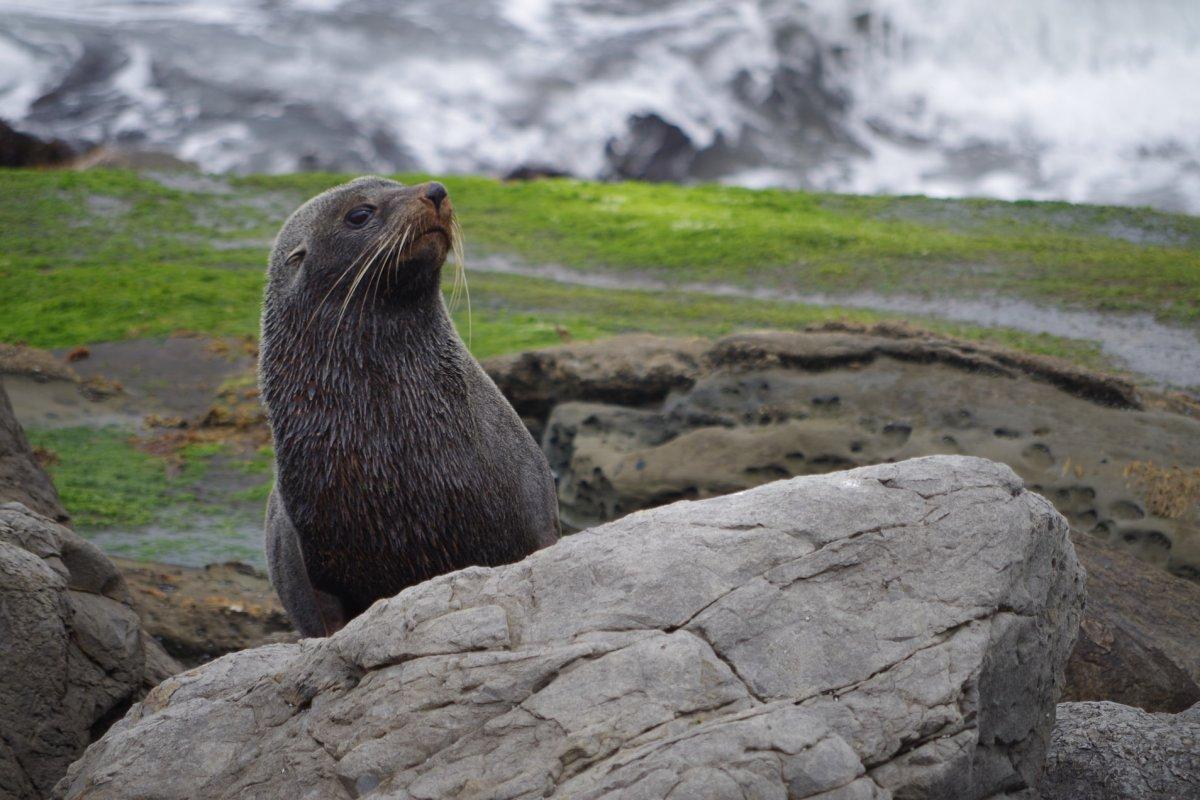
- Name: South American fur seal
- Scientific name: Arctocephalus australis
- Conservation status:
The South American fur seal is a species of seal native to the coastlines of Uruguay, Argentina, Brazil, Peru, Chile and the Malvinas Islands. Uruguay has one of the largest breeding populations, with about 31,000 pups, while the largest one is on the coastline of the Malvinas Islands (about 36,000 pups).
Although having large numbers, a wide distribution and being listed as least concern, the South American fur seal numbers have largely declined in only a decade, going from 500,000 in 1987 to 390,000 in 1999!
9. Southern long-nosed armadillo
- Name: Southern long-nosed armadillo
- Scientific name: Dasypus hybridus
- Conservation status:
The southern long-nosed armadillo is a species of armadillo native to central southeastern South America, which encompasses all of Uruguay, northeastern Argentina, southern Brazil and southeastern Paraguay.
This armadillo inhabits the grasslands of Uruguay, at elevations of up to 2,300 m / 7,500 ft above sea level, usually avoiding disturbed habitats such as agricultural cropland. It mostly feeds on ants and termites, but also on other invertebrates, mice and vegetables.
10. Southern tamandua
- Name: Southern tamandua
- Scientific name: Tamandua tetradactyla
- Conservation status:
Speaking of ants and termites, the southern tamandua, also known as the lesser anteater or the collared anteater, is a species of anteater native to South America and present on the island of Trinidad in the Caribbean Sea. It inhabits arid savannas and highly disturbed secondary forests, and digs out ants, termites and bees from their hills, nests or hives with its very strong foreclaws.
This anteater can be found at up to 1,600 m / 5,200 ft above sea level.
11. Paraguayan hairy dwarf porcupine
- Name: Paraguayan hairy dwarf porcupine
- Scientific name: Coendou spinosus
- Conservation status:
The Paraguayan hairy dwarf porcupine is a very peculiar and intriguing species that you might have never heard of. It is found in Uruguay, Paraguay, Argentina and Brazil, and is, as its name suggests, very small and covered in long hair. Its tail is short, and its quills are brown.
This porcupine feeds on fruits, vegetables, roots and ants, but not much else is known about it.
12. Southern right whale
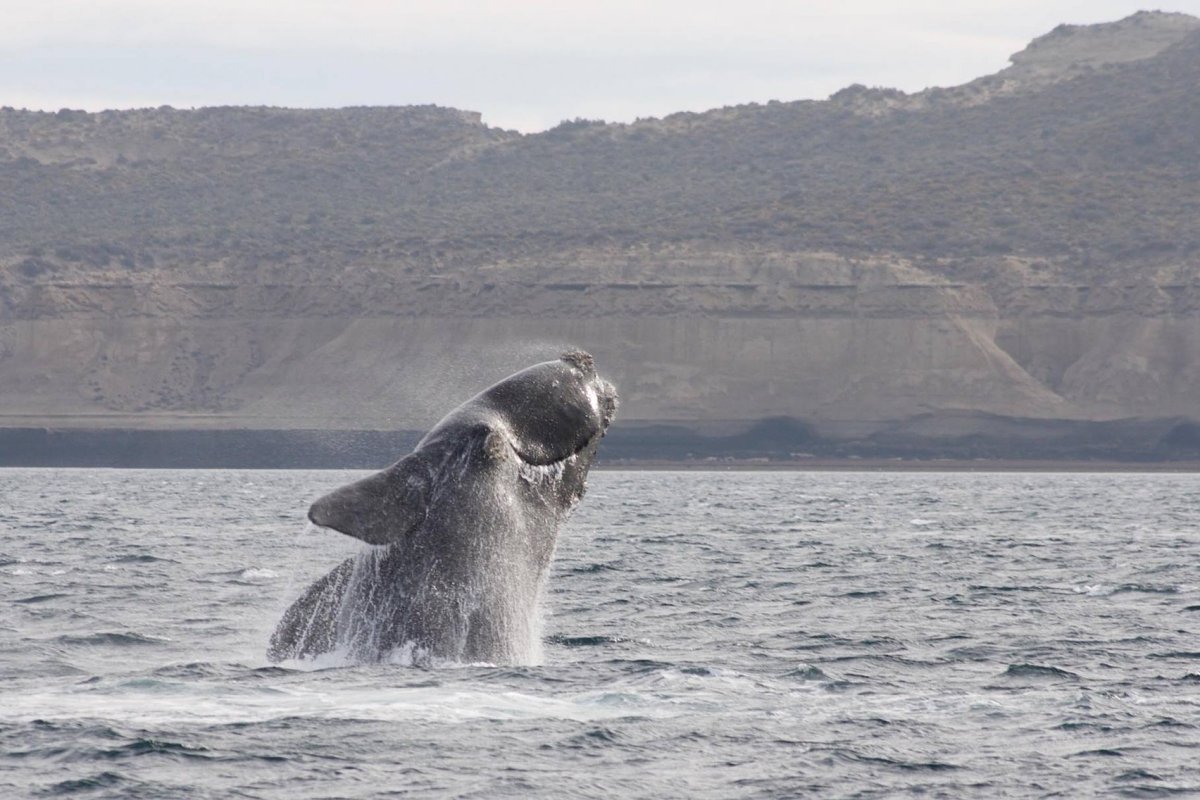
- Name: Southern right whale
- Scientific name: Eubalaena australis
- Conservation status:
The southern right whale is a species of right whale native to the southernmost parts of the globe, but not the extreme Antarctic waters: it can rather be found around the latitude of South Africa, the southern half of South America, and Australia and New Zealand.
There are about 13,600 southern right whales in the world. In Uruguay, some coastal sites such as Punta del Este are home to southern right whales during the breeding season, and a sanctuary was created for them in 2013.
13. Collared peccary
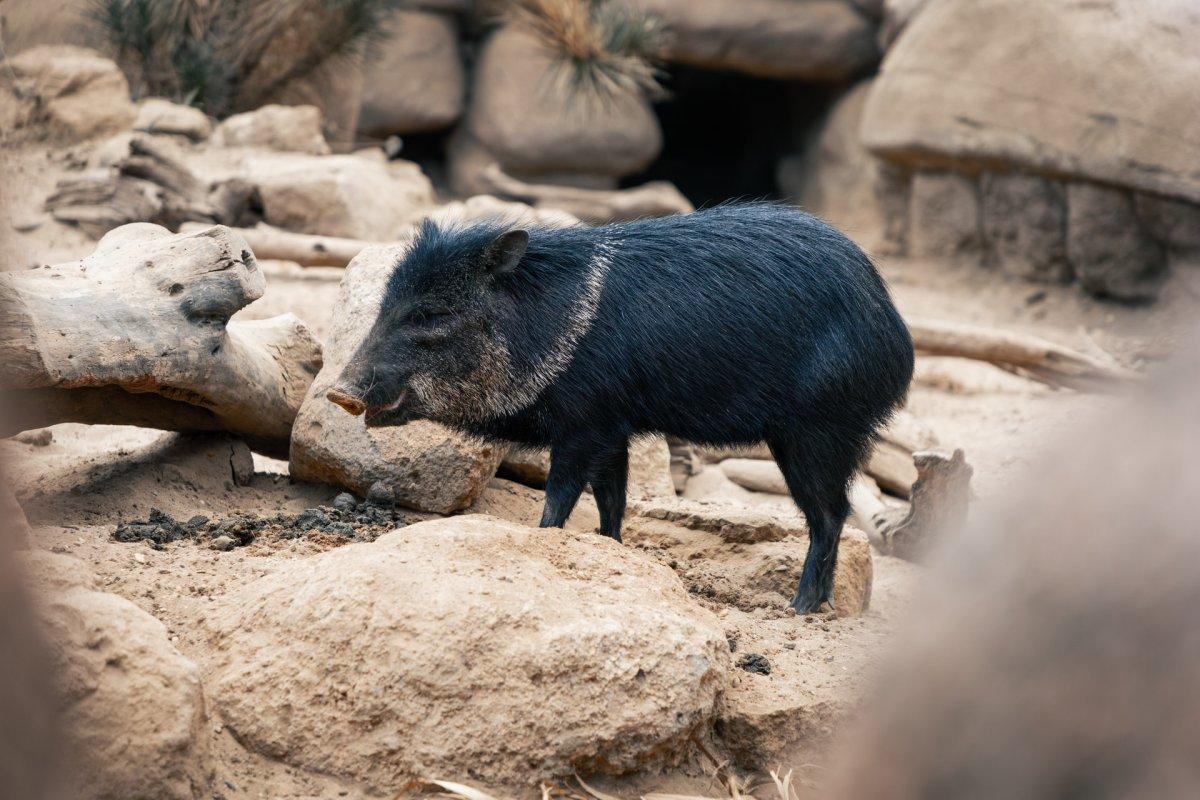
- Name: Collared peccary
- Scientific name: Dicotyles tajacu
- Conservation status:
The collared peccary, also known as the musk hog, is a species of mammal native to Central and South America, in which it is very common and widespread. It resembles a wild boar and is often referred to as a pig, but it comes from a distinct family.
This animal had disappeared from Uruguay for about an entire century due to overhunting, before being reintroduced in 2017.
14. Big lutrine opossum
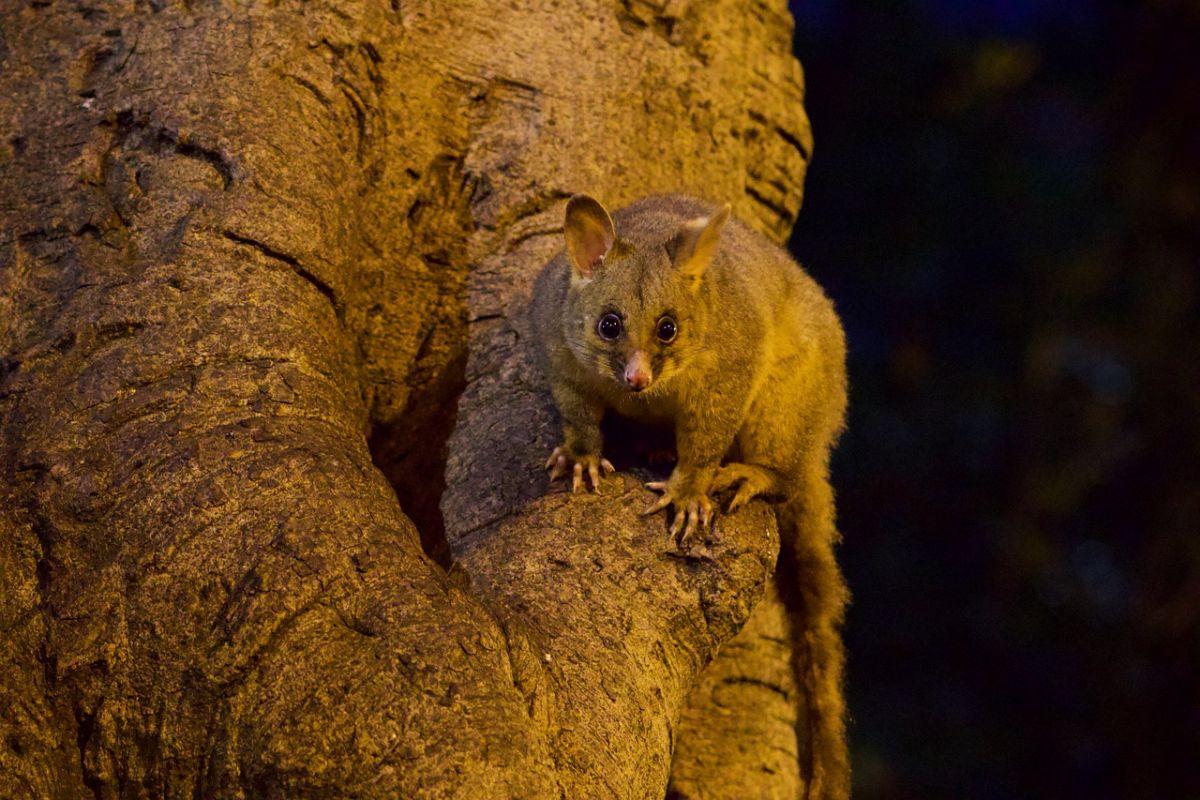
- Name: Big lutrine opossum
- Scientific name: Lutreolina crassicaudata
- Conservation status:
The big lutrine opossum, also known as the thick-tailed opossum, the little water opossum or the coligrueso, is a species of opossum native to South America. Its name comes from its large size and its physical resemblance to an otter or a weasel, having an unusually elongated body, short legs and small, rounded ears.
This mammal inhabits the savanna grasslands, grasslands and woodlands with permanent bodies of water in Uruguay, and is carnivorous and insectivorous.
15. Gray brocket
- Name: Gray brocket
- Scientific name: Mazama gouazoubira
- Conservation status:
The gray brocket, also known as the brown brocket, is a species of brocket deer native to Uruguay, Paraguay, Argentina, Brazil, Peru and Bolivia. Its fur is gray to brown, hence its names, and it features some reddish tones.
This deer is herbivorous, and it feeds on a wide variety of plants. Depending on the season, it can also adapt and eat fruits, usually in dense forests. It uses scent marking for communication purposes.
16. Nutria
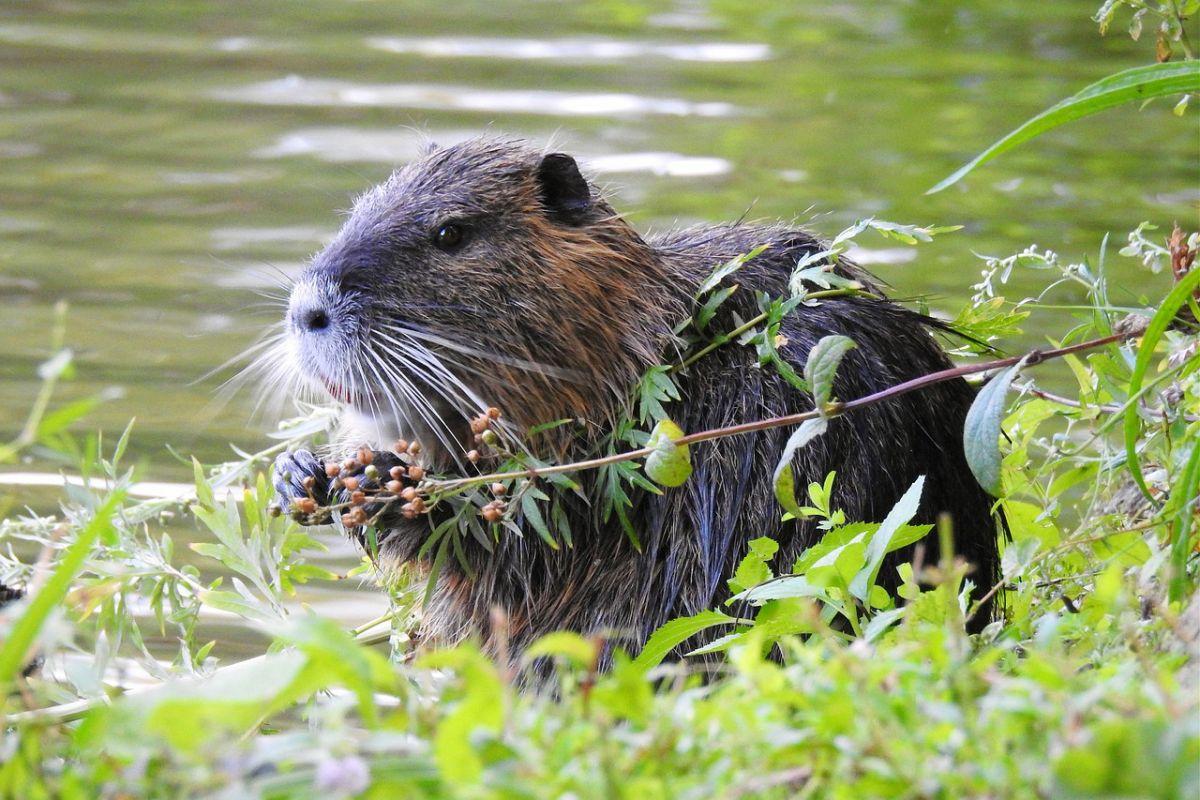
- Name: Nutria
- Scientific name: Myocastor coypus
- Conservation status:
The nutria, also known as the coypu, is a large species of semi-aquatic rodent native to the southern half of South America, and introduced to many other places in the world, including Europe, the United States, Japan and East Africa.
This rodent is herbivorous, and has long been hunted for its fur. Depending on the area, it can be considered a pest and an invasive species, due to its feeding habits bringing conflict with humans.
17. Pampas cat
- Name: Pampas cat
- Scientific name: Leopardus colocola
- Conservation status:
The Pampas cat is a small species of wild cat native to South America. It is seriously threatened by habitat conversion and loss, and is thus listed as near threatened with extinction, since its population is expected to suffer a continuous decline over the next decades.
This cat is named after the Pampas, but actually inhabits the dry forests, shrublands and grasslands of Uruguay, at altitudes of up to 5,000 m / 16,000 ft above sea level.
18. Lesser yellow-headed vulture
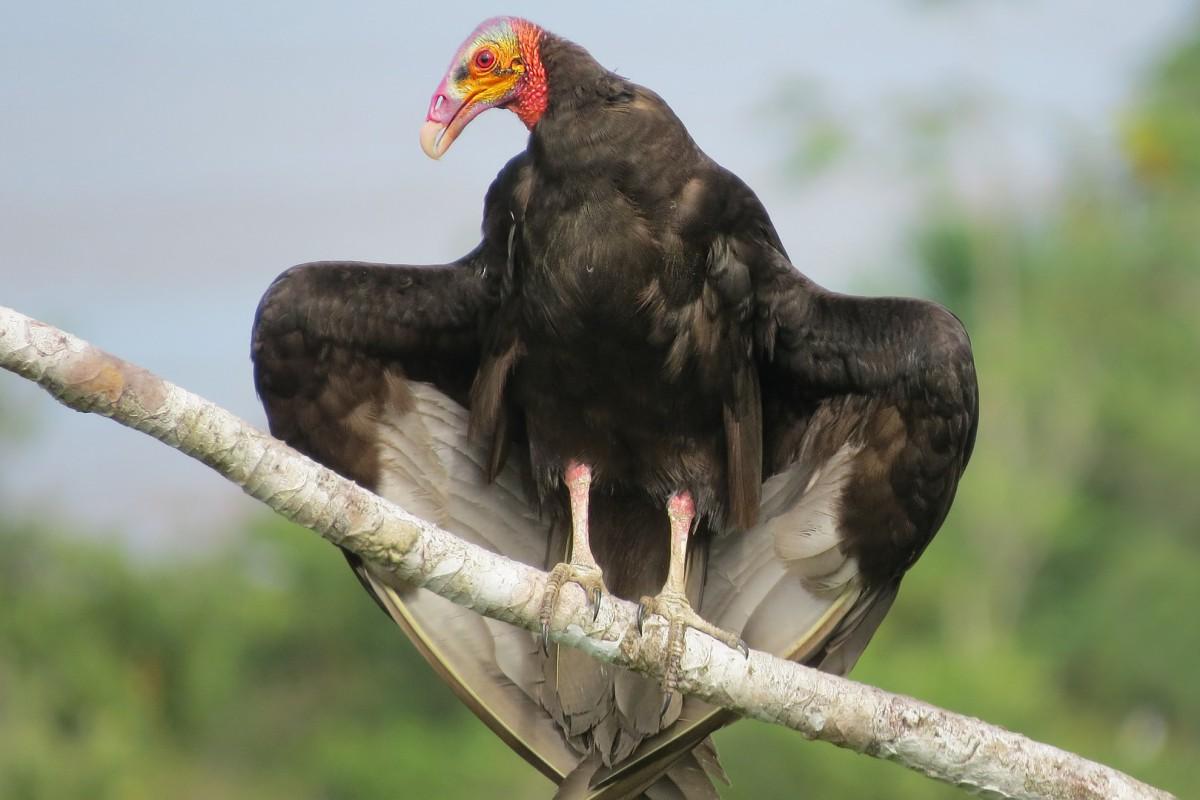
- Name: Lesser yellow-headed vulture
- Scientific name: Cathartes burrovianus
- Conservation status:
The lesser yellow-headed vulture, also known as the savanna vulture, is a species of New World vulture native to Central and South America. It is pretty large, having a wingspan of up to 165 cm / 65 in, and while its body is mostly black, its featherless head and neck are yellow or orange, with red and blue areas.
Similarly to other vultures, the lesser yellow-headed vulture is a scavenger that feeds on carrion. To locate carcasses, it uses not only its sight, but also its smell, which is pretty rare in birds.
19. Roseate spoonbill
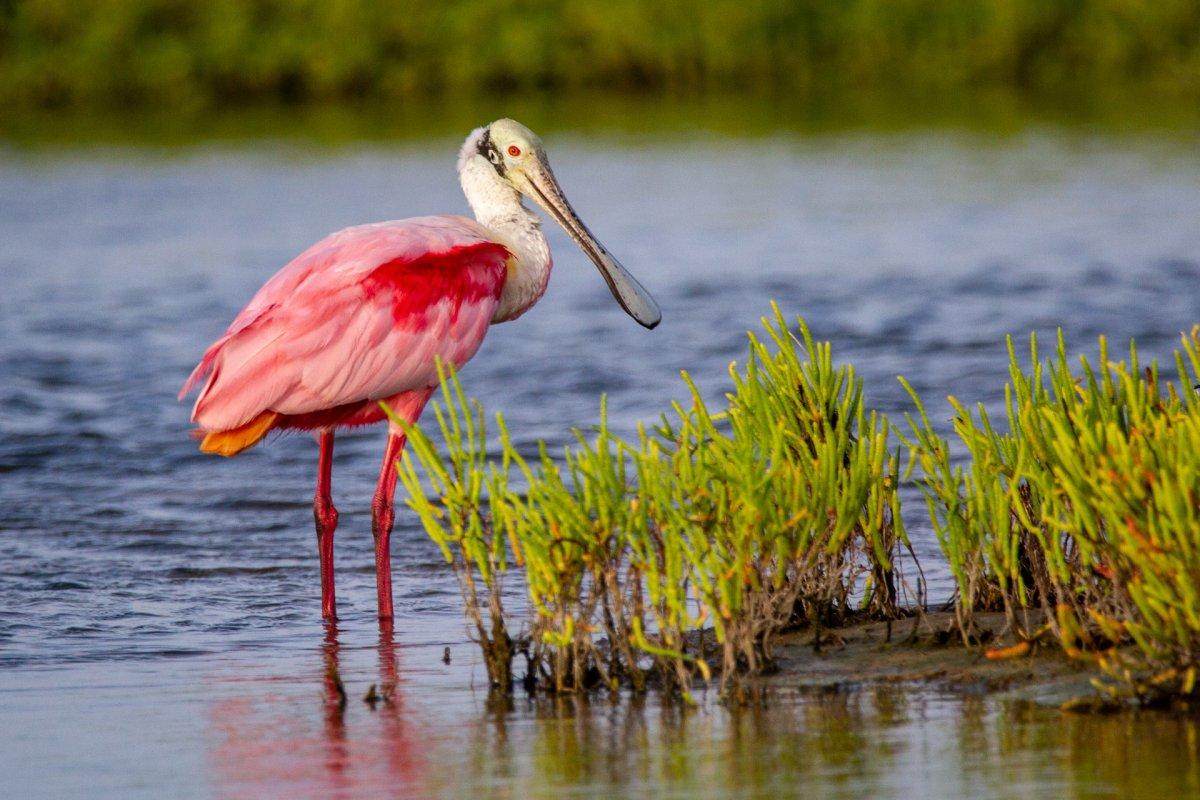
- Name: Roseate spoonbill
- Scientific name: Platalea ajaja
- Conservation status:
The roseate spoonbill is a species of wading bird of the spoonbill and ibis family. It is a resident bird that does not migrate, and can be found in North and South America.
This bird can be found all around Uruguay, usually around coastal or shallow, fresh waters. It swings its bill from one side to another in order to feed, and lives in groups. It nests in trees or shrubs, usually in mangroves.
20. Ocelot
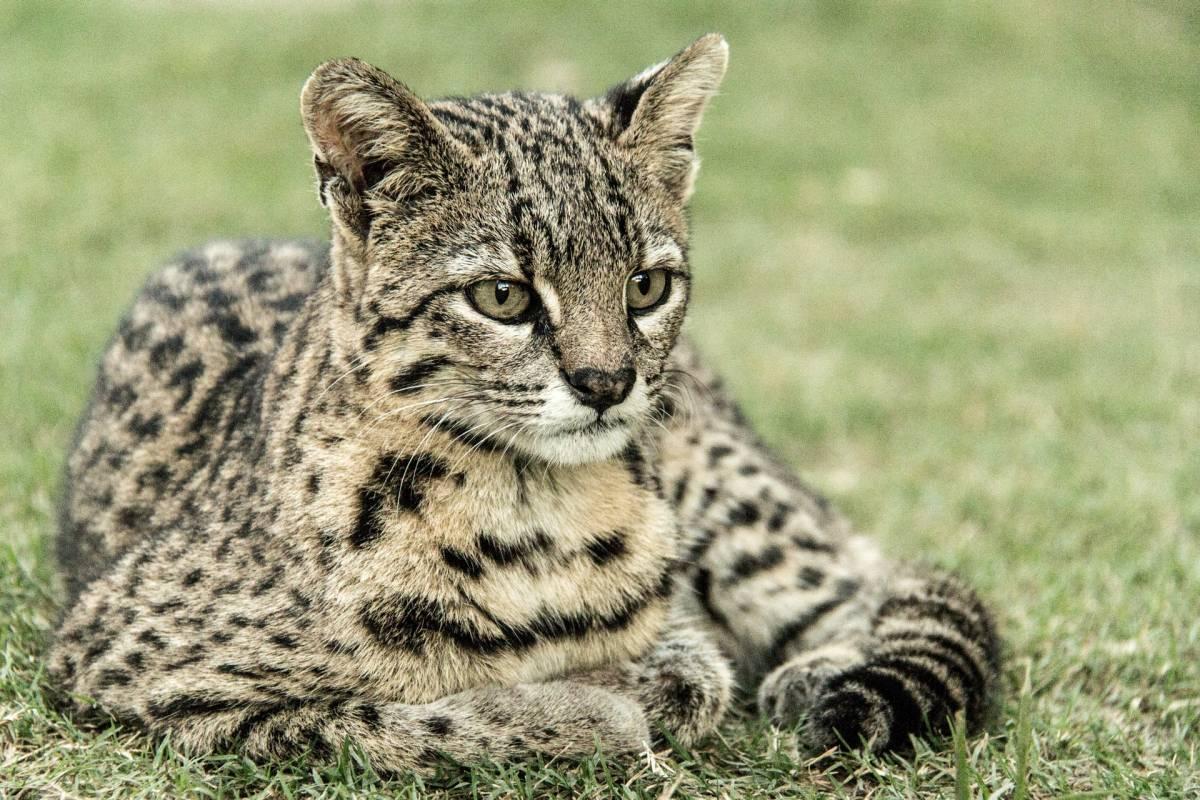
- Name: Ocelot
- Scientific name: Leopardus pardalis
- Conservation status:
The ocelot is a medium-sized species of wild cat native to Central and South America. It can be found in areas with dense vegetation cover, high prey availability and near sources of water, such as mangrove swamps, savannas and thorn forests, at elevations of up to 3,000 m / 9,800 ft above sea level.
Hunting the ocelot is banned in Uruguay and in many other South American countries, and this most definitely greatly helps for the conservation of this species.
21. Pampas fox
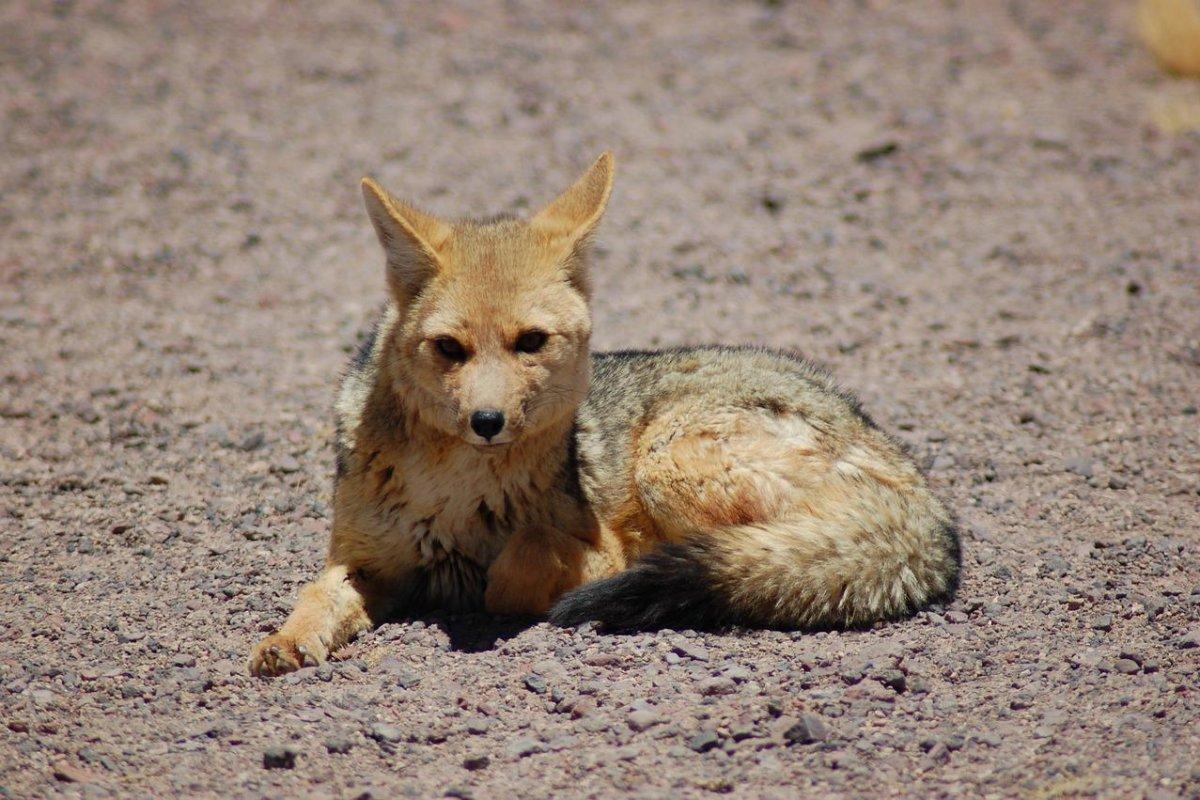
- Name: Pampas fox
- Scientific name: Lycalopex gymnocercus
- Conservation status:
The Pampas fox, also known as the Pampas zorro, the gray pampean fox or the Azara’s fox, is a medium-sized species of fox native to the Pampas of South America. It can be found all around Uruguay, usually below 1,000 m / 3,300 ft in altitude, mostly in the subtropical grasslands of the country.
Despite being considered of least concern, the Pampas fox still faces man-made threats such as hunting for its fur, persecution and habitat conversion and destruction.
22. Giant otter
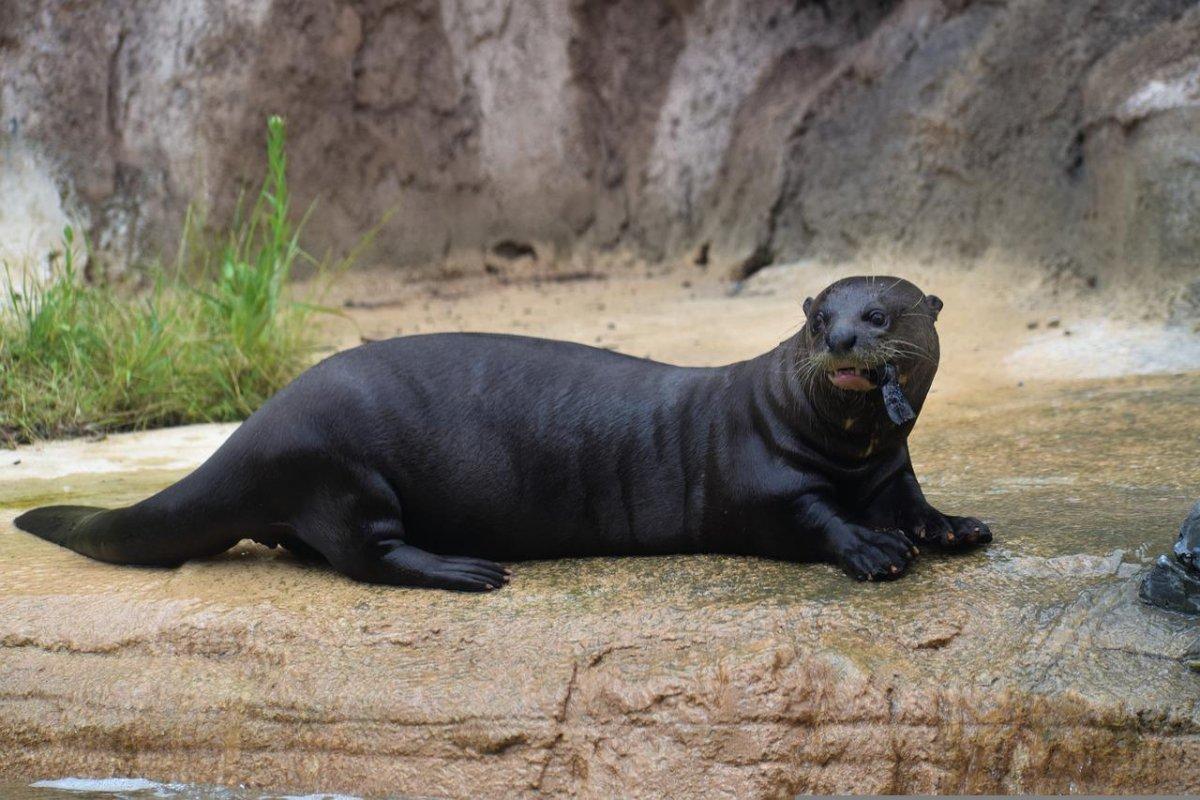
- Name: Giant otter
- Scientific name: Pteronura brasiliensis
- Conservation status:
The giant otter, also known as the giant river otter, is a species of semi-aquatic mustelid native to South America. As its name suggests, it is particularly large, reaching a length of up to 1.7 m / 5.6 ft!
This otter is social, which is quite rare among mustelids, and it lives in family groups of 3 to 8 individuals. Some sources consider its presence in Uruguay and Argentina uncertain, and it suffers from poaching, habitat destruction, ecotourism and conflict with fishermen.
23. Imperial shag
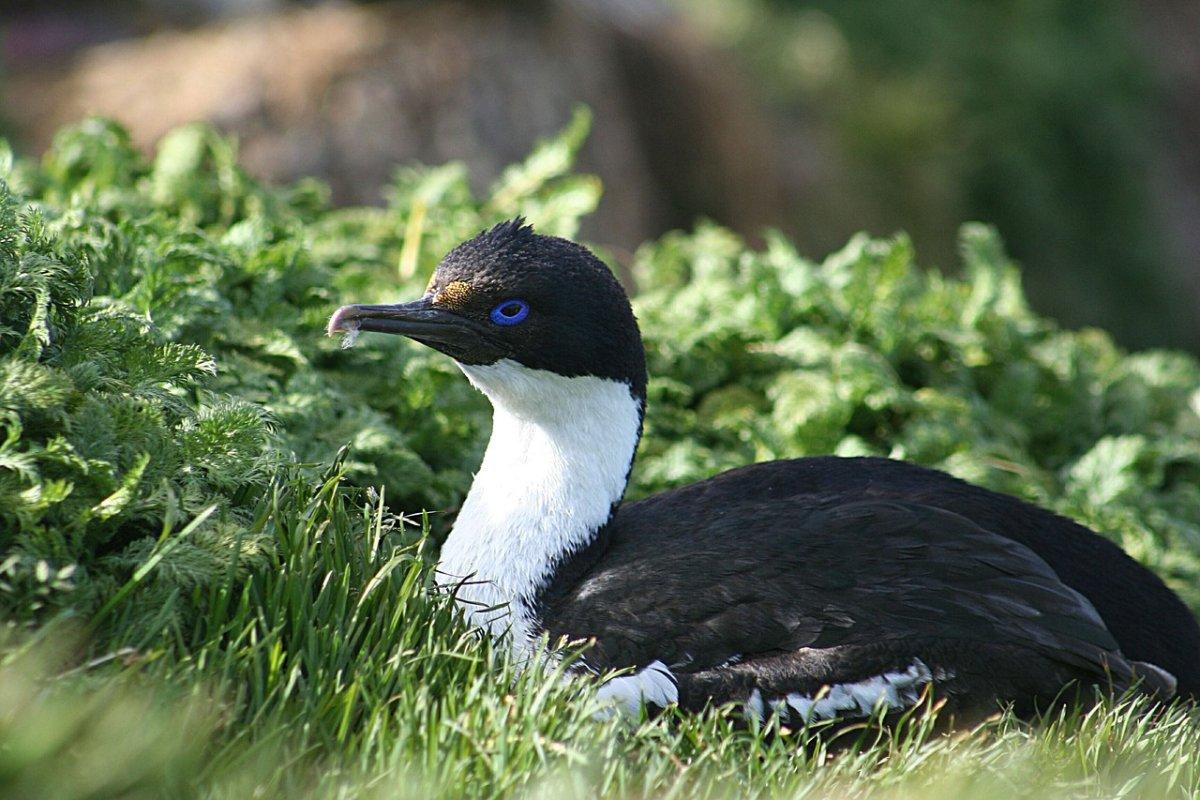
- Name: Imperial shag
- Scientific name: Leucocarbo atriceps
- Conservation status:
The imperial shag, also known as the imperial cormorant, the blue-eyed cormorant or the blue-eyed shag, is a species of cormorant native to southern South America. Quite unusually for such a bird, it is black and white, just like a penguin, and inhabits the rocky, coastal regions of Uruguay and the nearby countries of Argentina and Chile.
This bird feeds on fish, crustaceans, gastropods and octopuses, and it can dive as deep as 60 m / 200 ft in order to do so.
24. Maguari stork
- Name: Maguari stork
- Scientific name: Ciconia maguari
- Conservation status:
The maguari stork is a large species of stork native to South America, in two distinct areas: there is a northern and northwestern population, and a central and southern one. Although slightly larger than the more famous white stork, it is very similar in appearance to it, except for its brown and gray bill.
This stork inhabits the lowland shallow-water wetlands and tropical wet savanna grasslands of Uruguay, where it feeds on fish, eels, earthworms, invertebrates and frogs.
25. Greater bulldog bat
- Name: Greater bulldog bat
- Scientific name: Noctilio leporinus
- Conservation status:
The greater bulldog bat, also known as the fisherman bat, is a species of fishing bat native to Latin America. It is particularly large, as its name suggests, and is known to scoop up fish with the pouch between its legs. In order to locate its prey, it uses echolocation to find water ripples.
This bat primarily lives in the tropical lowlands of Uruguay, usually around streams, estuaries, coastal lagoons and ponds.
26. La Plata dolphin
- Name: La Plata dolphin
- Scientific name: Pontoporia blainvillei
- Conservation status:
The La Plata dolphin, also known as the toninha or the franciscana, is a species of dolphin native to the coastal Atlantic waters of southeastern South America. Although part of the river dolphin group, it only lives in saltwater estuaries and in the ocean, and is the only one in the group to do so.
The largest catches of La Plata dolphins were recorded in Uruguay in the 1970s, although Argentina and Brazil are fishing more and more of them in recent decades.
27. Brazilian guinea pig
- Name: Brazilian guinea pig
- Scientific name: Cavia aperea
- Conservation status:
The Brazilian guinea pig is a medium-sized species of guinea pig found in Brazil, but also in other South American countries such as Uruguay, Paraguay, Argentina, Colombia and Bolivia. Compared to a domestic guinea pig, it is narrower and longer.
This rodent can be found in the open grasslands and savannas of Uruguay, at altitudes between 400 and 3,000 m / 1,300 and 9,800 ft. It is a herbivore that feeds on herbs and grasses.
—
So there you have them, these were my 27 native animals of Uruguay. I hope you enjoyed this list and that you learned something new today.
In case you want to learn more about animals in the country, feel free to keep reading, as I still have lots of things to tell you about:
Endangered Animals of Uruguay
This is definitely the saddest part of the list, but it is very important to raise awareness. Because of this, let’s go through the list of endangered animals in Uruguay.
Here are the animals in danger of extinction in Uruguay.
- Dusicyon avus
- Contomastix charrua
- Argentine angelshark
- Oceanic whitetip shark
- Bignose fanskate
- Sand tiger shark
- Glaucous macaw
- and 17 more…
- Blue whale
- Whale shark
- Groovebelly stingray
- Northern royal albatross
- Giant otter
- and 33 more…
To see the full list of endangered species in Uruguay, head over to the International Union for Conservation of Nature’s Red List.
What is the National Animal of Uruguay?
The national animal of Uruguay is the southern lapwing.
The southern lapwing is a small species of wader common and widespread throughout South America. It is one of the symbols of the Brazilian state of Rio Grande do Sul, and is the emblem of Uruguay.
This bird is naturally bold, ferocious and combative, and was thus declared the country’s national animal. In the country, it is known as the “tero”.
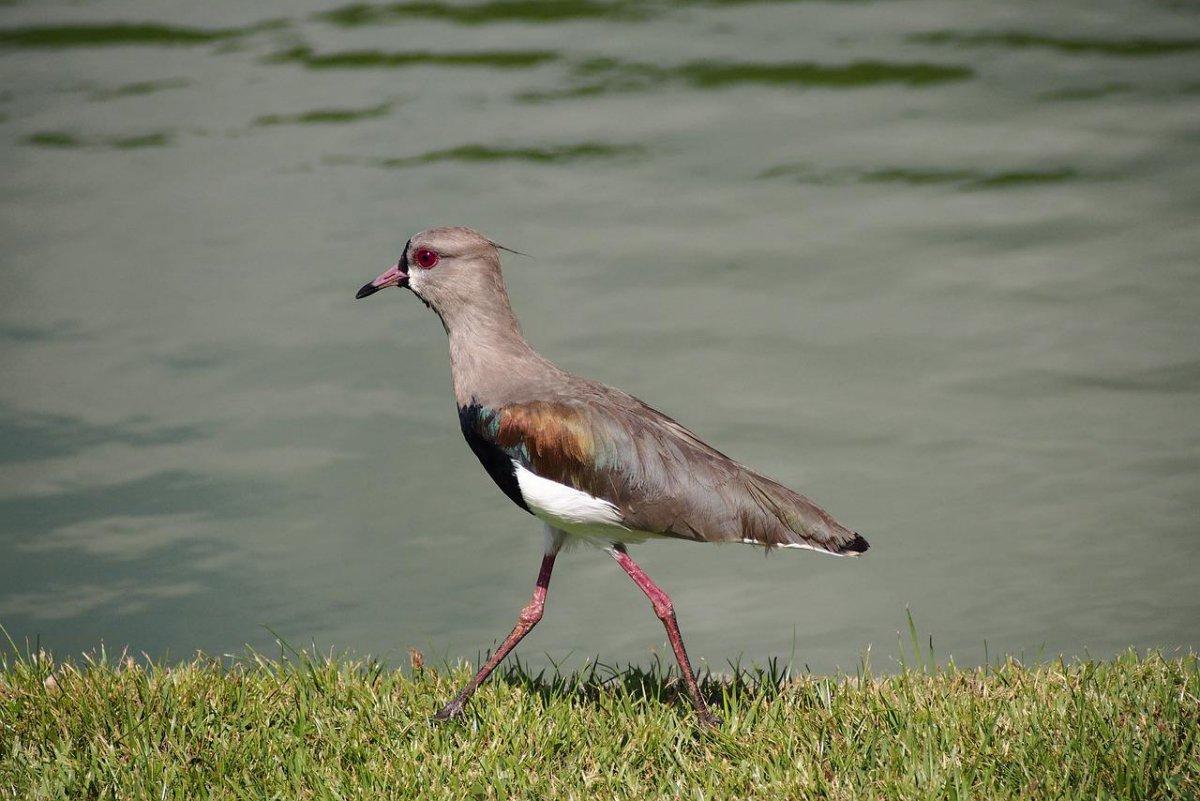
How Many Animals Native to Uruguay?
What is the diversity of native animals in Uruguay?
Let’s look at the total number of species of Chordata (mammals, birds, fishes and reptiles).
Total number of animal species in Uruguay: 1,202 (14,422 in total in South America
More About Animals in the World!
Loved these Uruguay animal facts? Want to see what animals live in other countries?
Then check out these posts:
Or click here to see ALL the facts up on the blog! Spoiler alert: there’s A LOT of them.
Share the knowledge! Click on the buttons below to share information about these famous animals in Uruguay with your friends, and help them learn more about the world 🙂
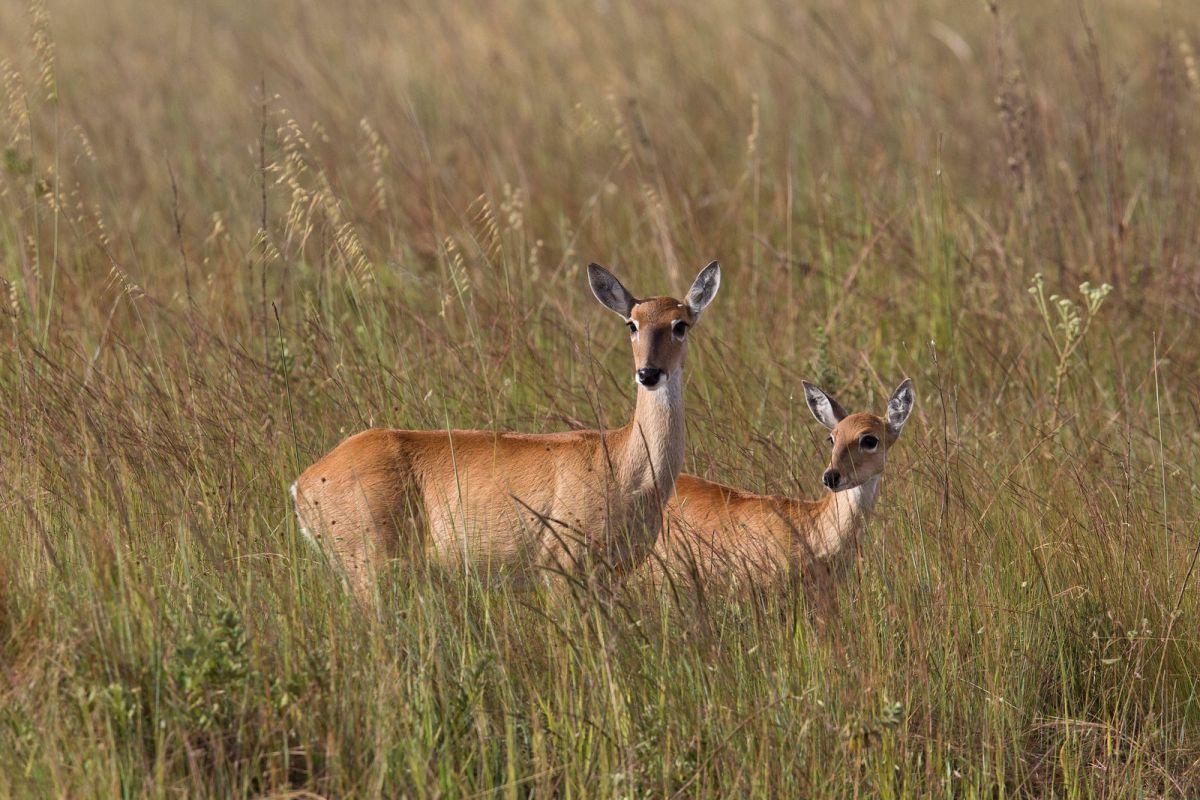
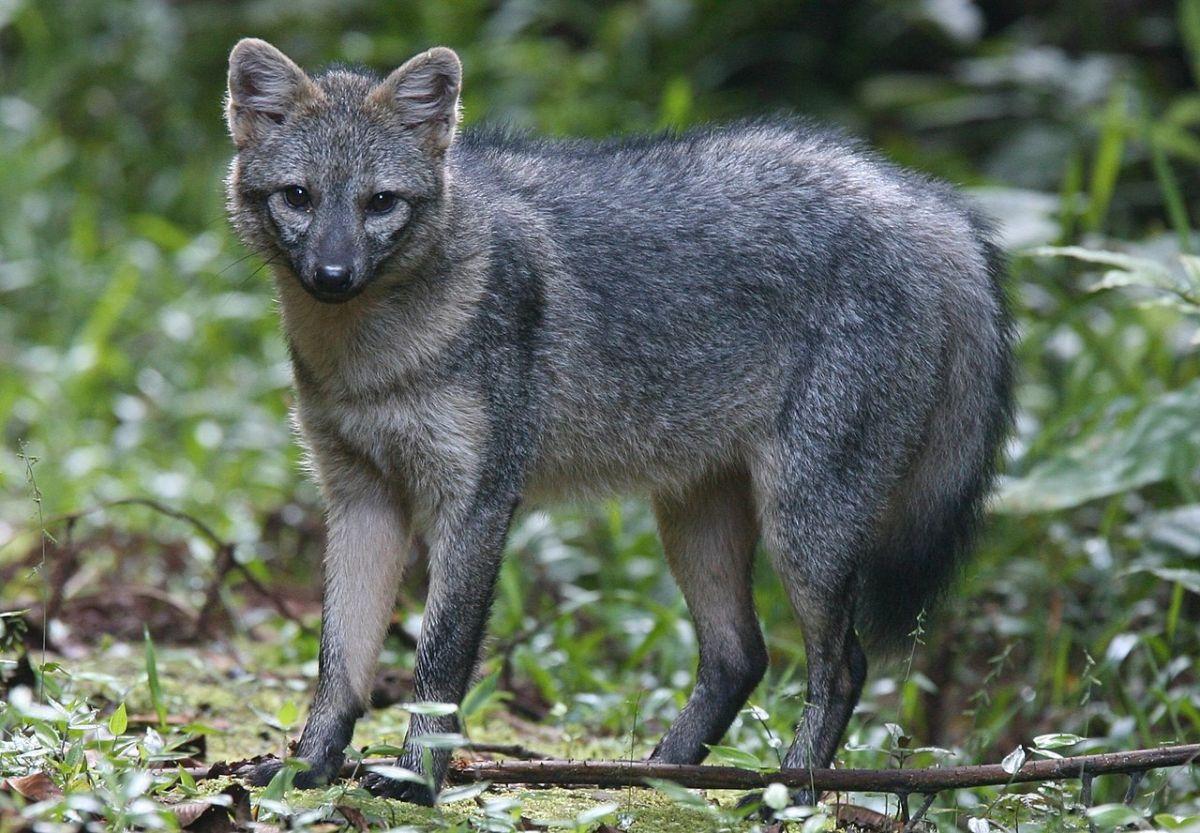
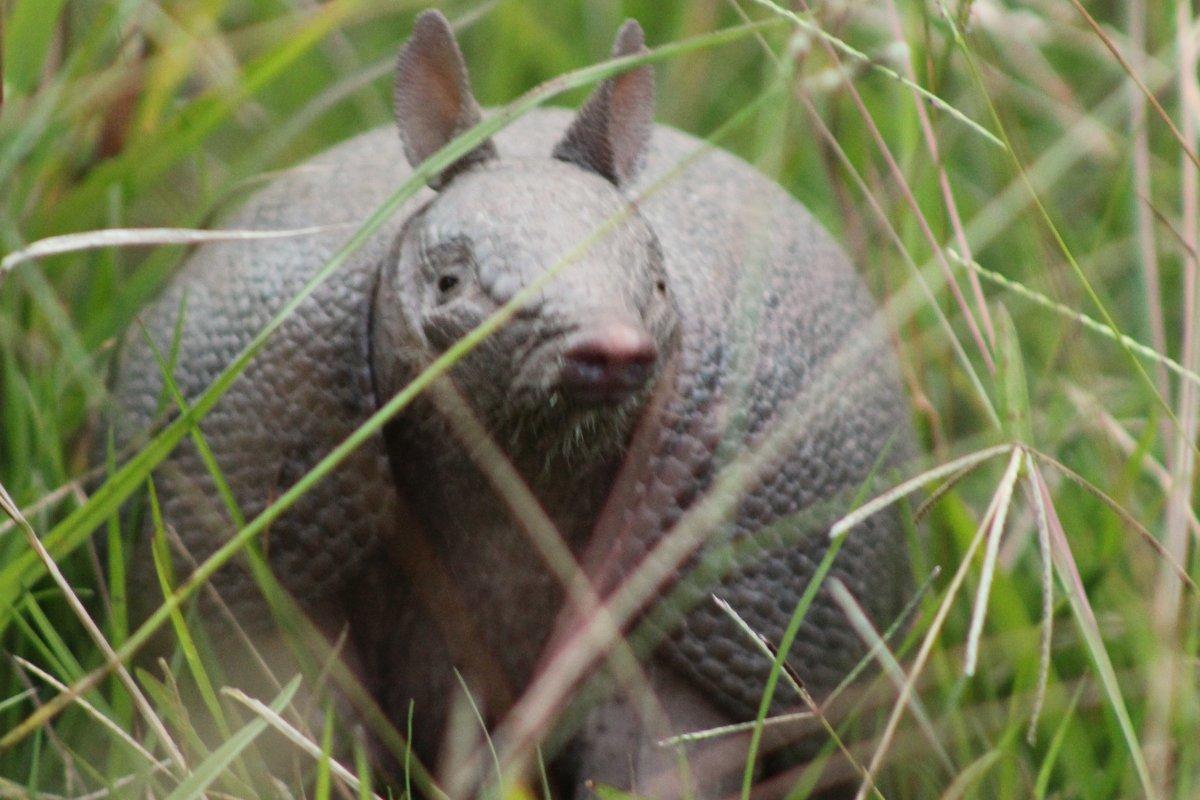
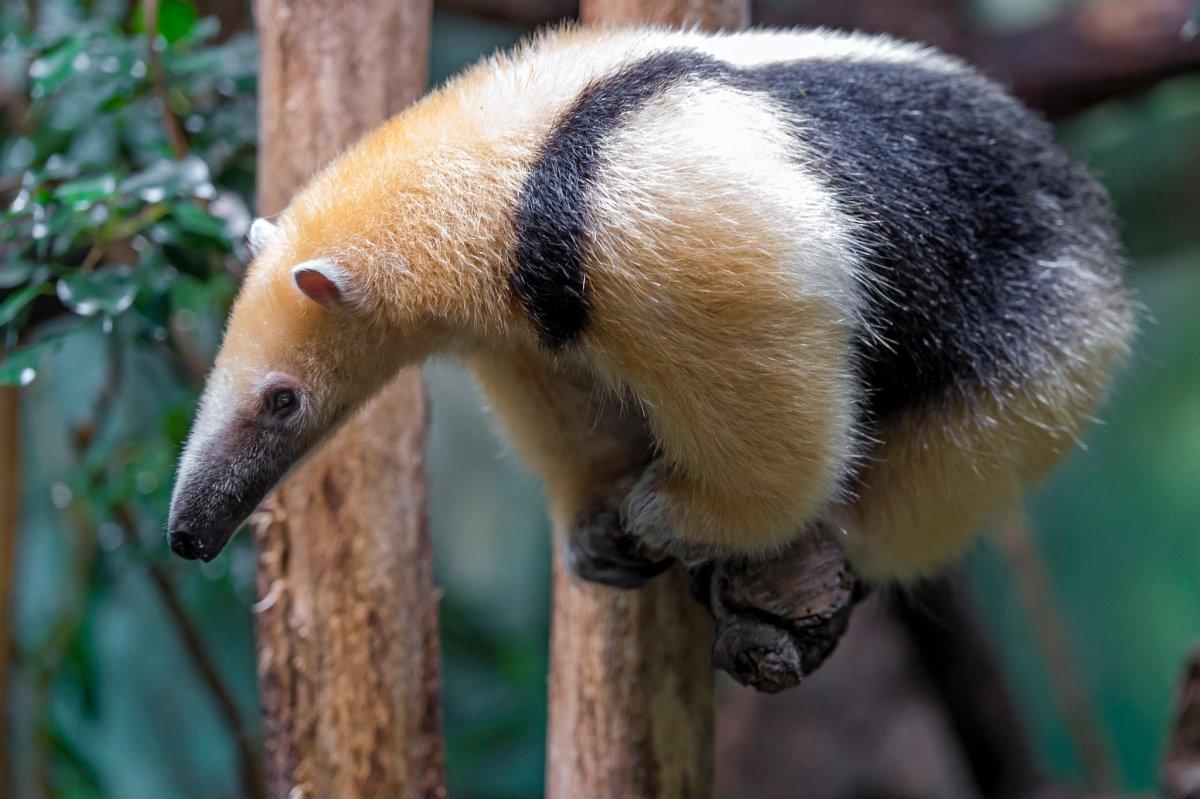
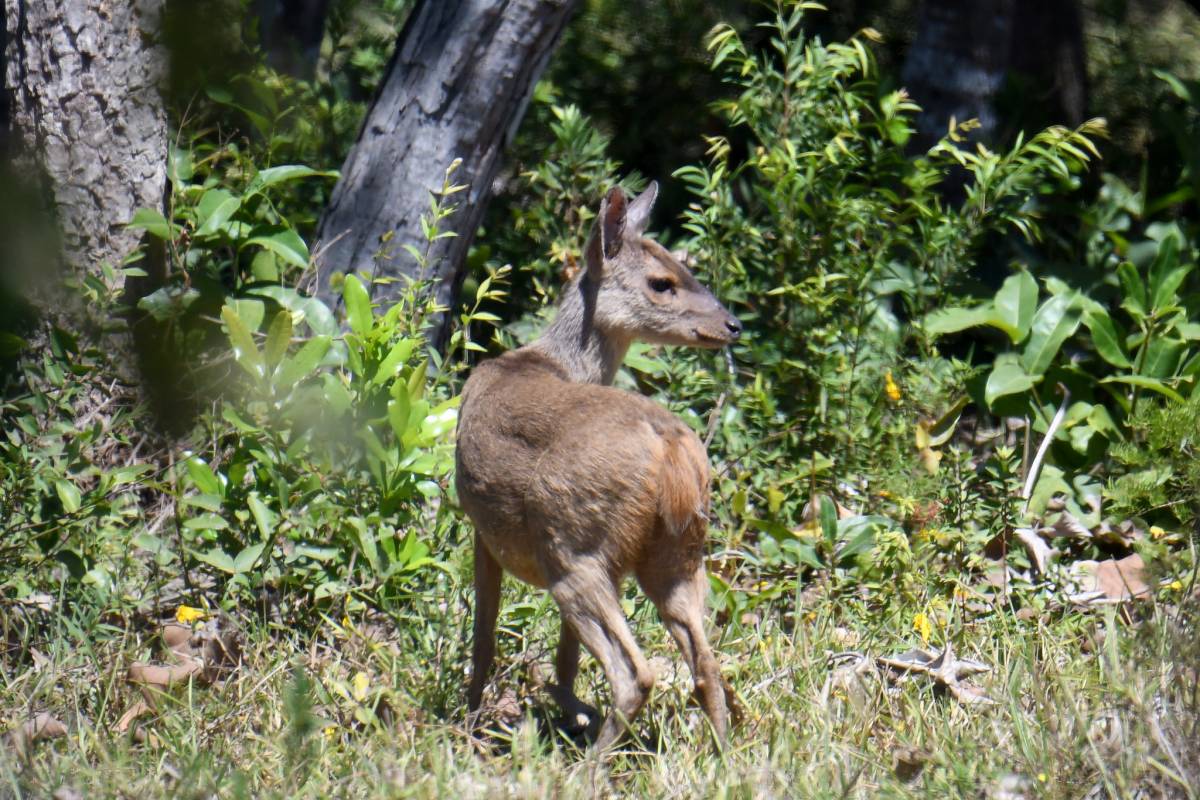
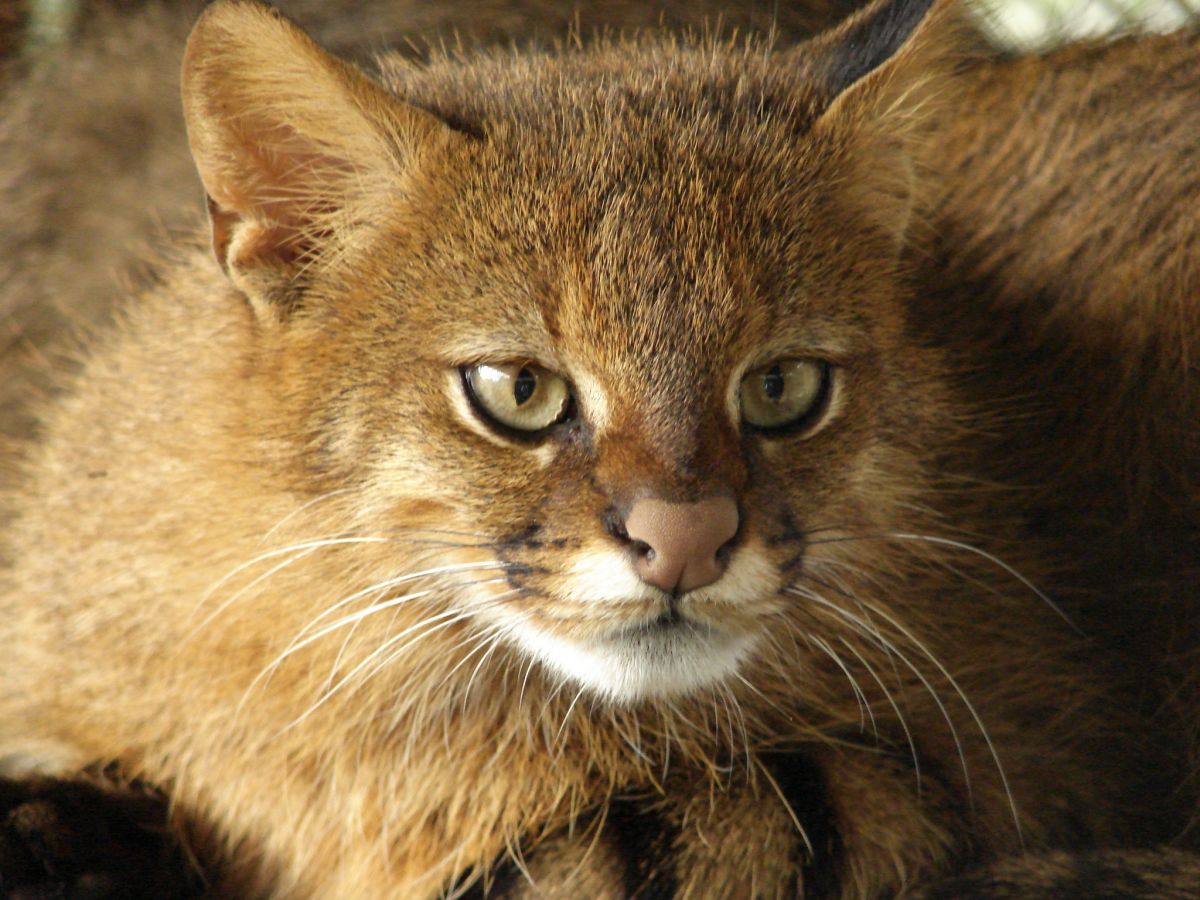
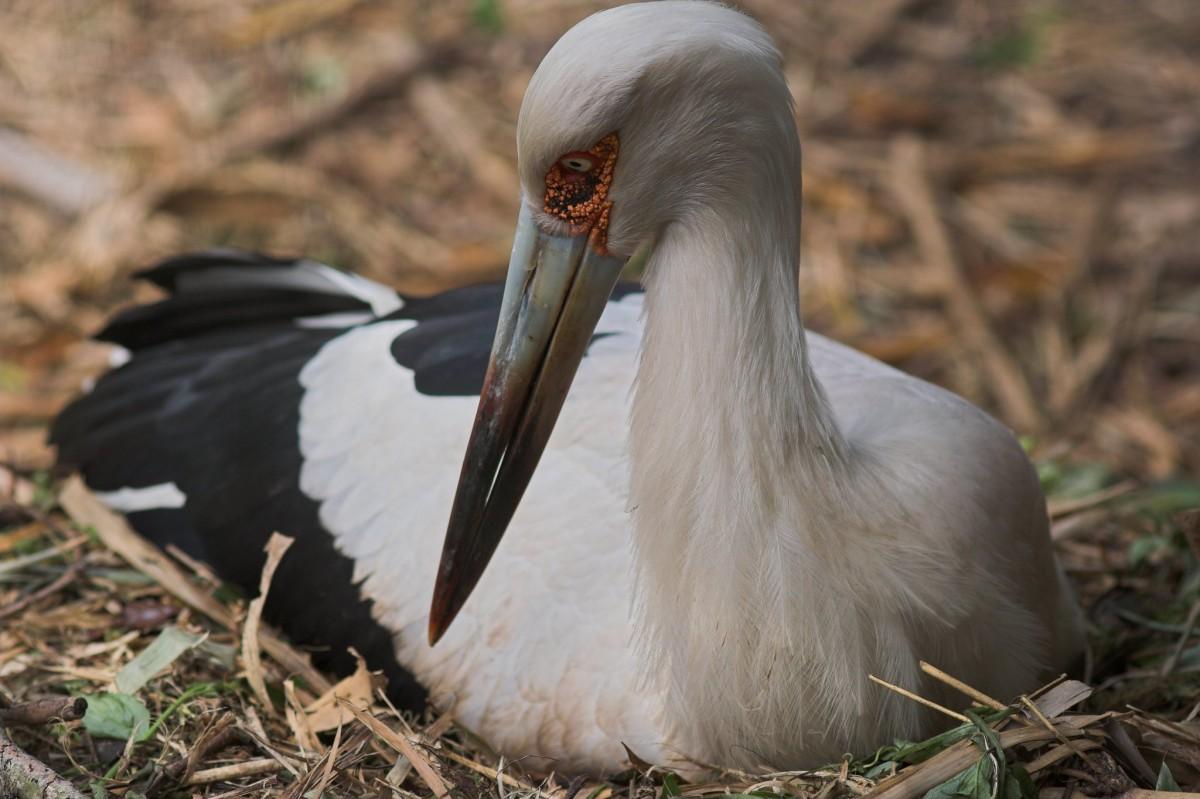
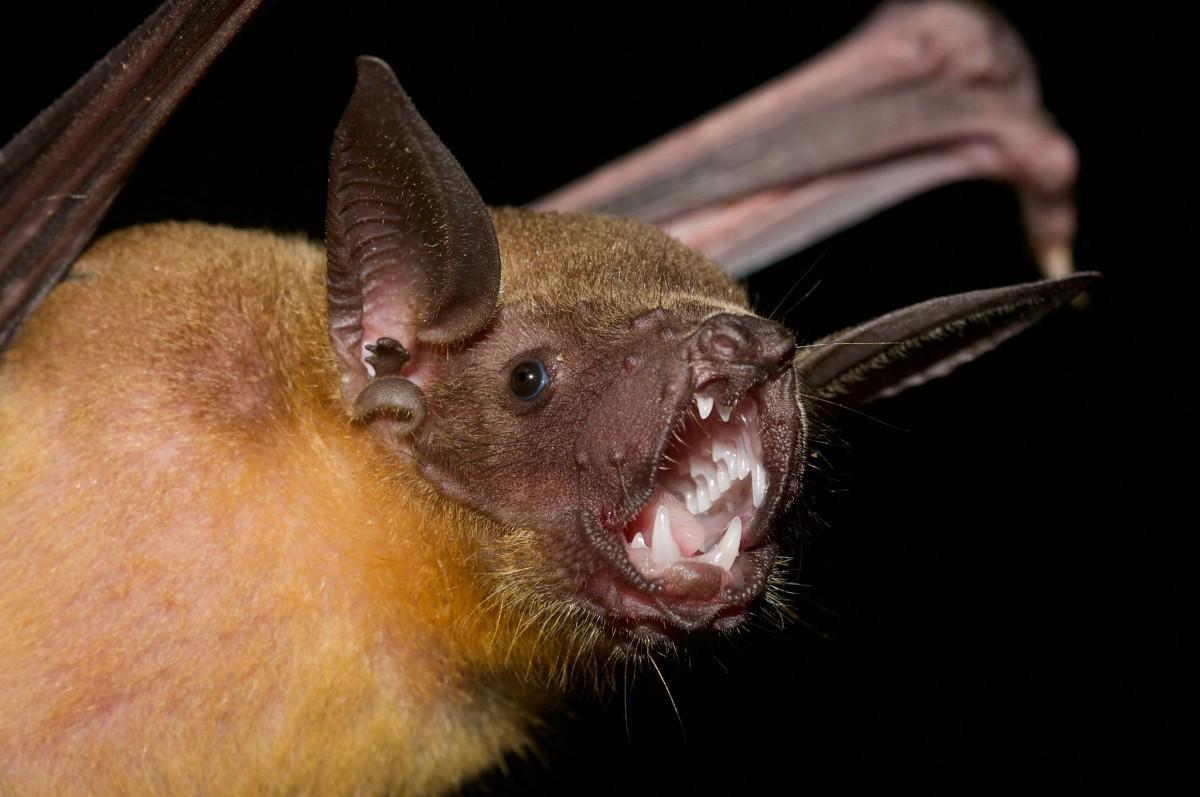
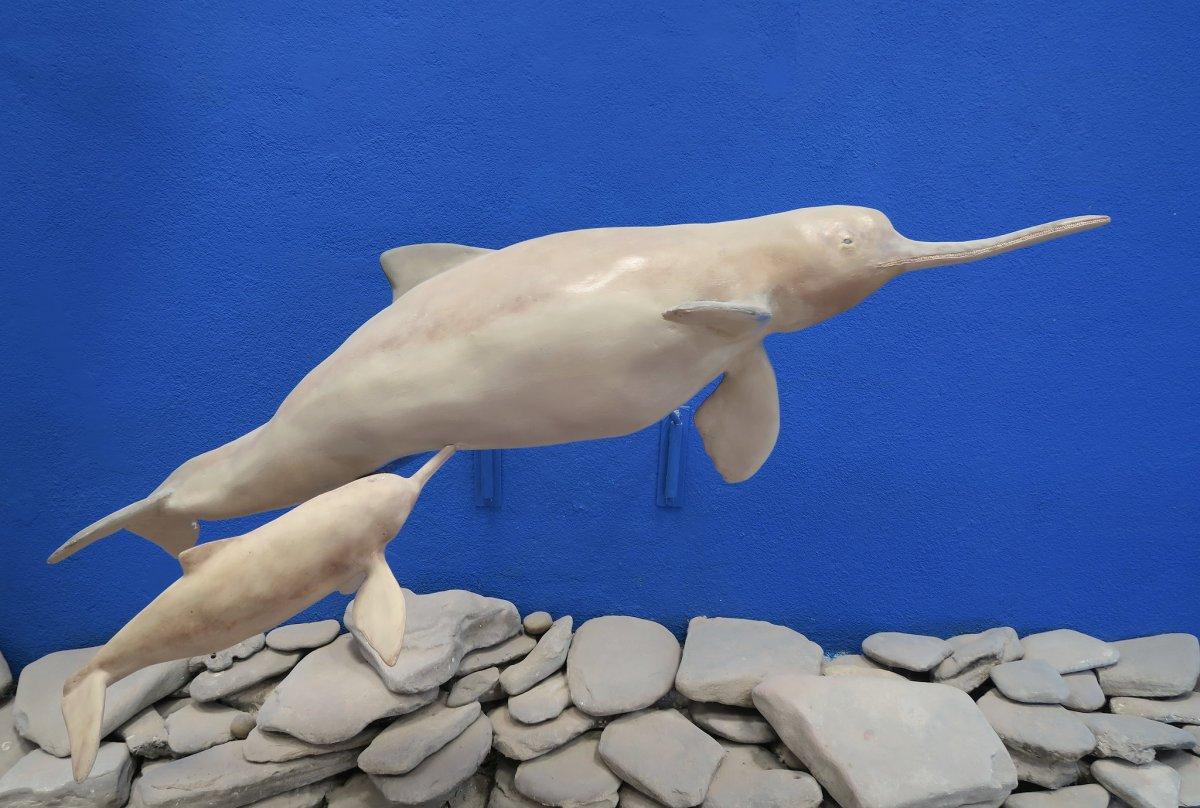
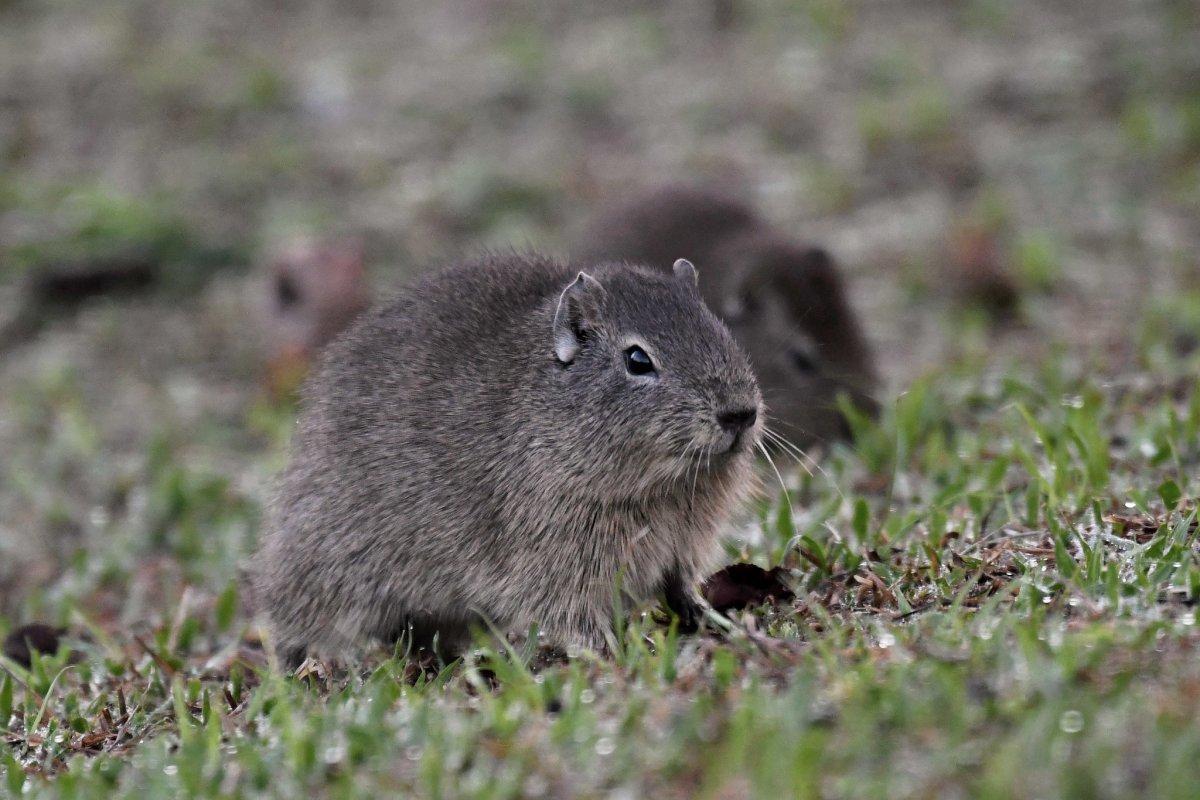

![77 Wild Animals in Kenya [Wildlife in Kenya]](https://www.kevmrc.com/wp-content/uploads/2022/12/77-wild-animals-in-kenya.jpg)
![21 Wild Animals in Singapore [Wildlife in Singapore]](https://www.kevmrc.com/wp-content/uploads/2022/12/21-wild-animals-in-singapore.jpg)
![14 Wild Animals in Zanzibar [Wildlife in Zanzibar]](https://www.kevmrc.com/wp-content/uploads/2022/12/14-wild-animals-in-zanzibar.jpg)
Hi there. Excellent and informative site. Was trying to find out if there were cougars in Uruguay when I stumbled on it. Would love to do a site like this to educate people on the need to preserve the environment and wildlife. Any tips?
I am in Australia.
Cheers
David Moore